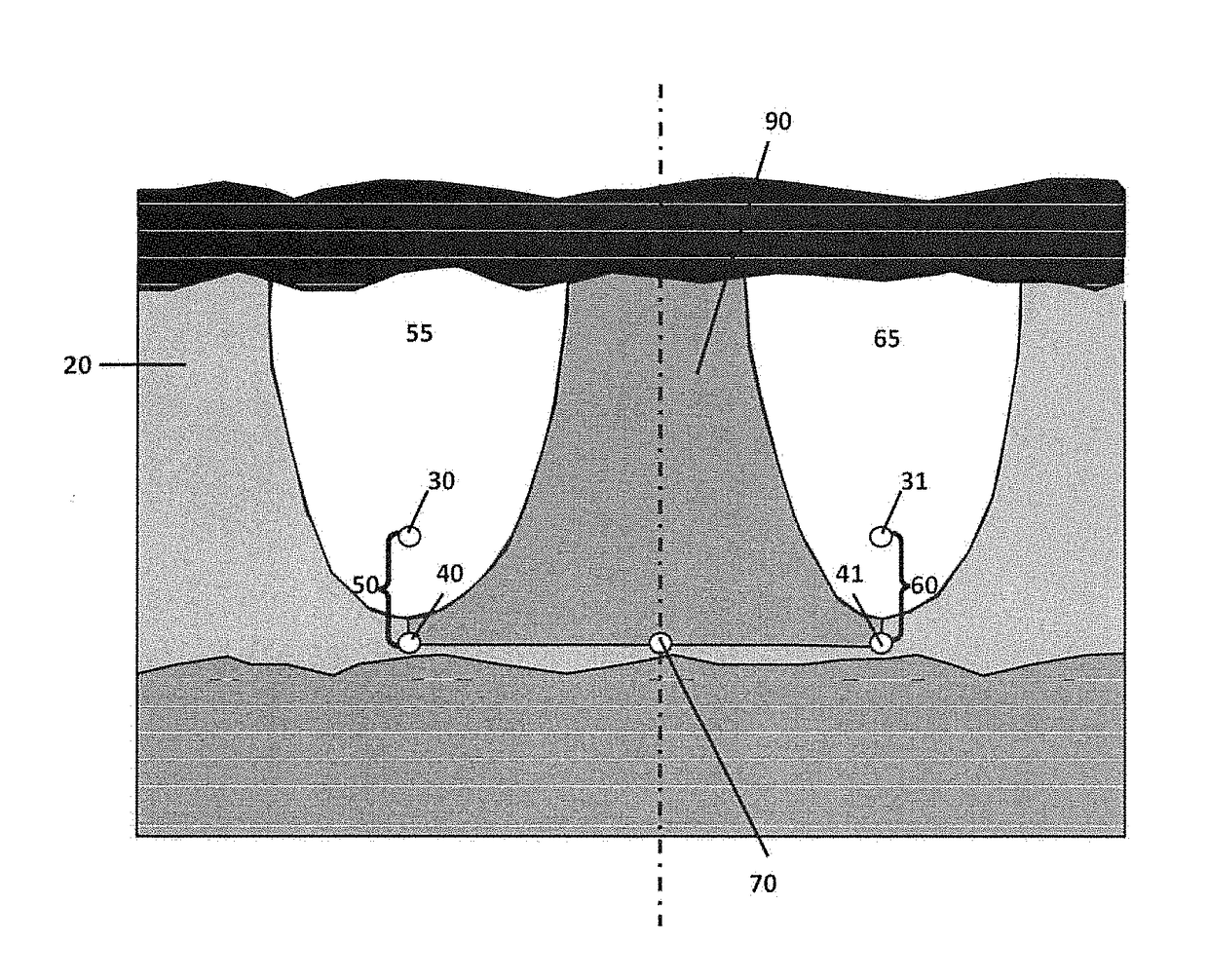Steam-solvent-gas process with additional horizontal production wells to enhance heavy oil / bitumen recovery
a technology of solvent gas and production wells, which is applied in the direction of drilling accessories, drilling machines and methods, fluid removal, etc., can solve the problems of progressively lower sagp oil rates, and achieve the effect of increasing the temperature of the reservoir
- Summary
- Abstract
- Description
- Claims
- Application Information
AI Technical Summary
Benefits of technology
Problems solved by technology
Method used
Image
Examples
Embodiment Construction
[0017]SAGD may be modified by injecting a solvent, with or without steam / NCG. The SAGD well arrangement may also be modified. Solvent injection is used to decrease the viscosity of the oil phase by the solvent concentration effect, in addition to the decrease of viscosity caused by the temperature increase effect due to steam injection. Solvent / NCG injection is also used to recover the heat stored in the chamber and for pressure maintenance. The timing of injection of solvent, steam and NCG has to be chosen appropriately. A process of this type, without the solvent, is described in Canadian Patent 2776704.
[0018]The well system for a preferred embodiment of the process here is a modification of the SAGD system with additional producers. The system consists of two adjacent horizontal and essentially parallel injector-producer well pairs 50, 60, vertically separated by a short distance (typically 4-10 m), of the type used for SAGD, with an additional horizontal production well 70 (refe...
PUM
 Login to View More
Login to View More Abstract
Description
Claims
Application Information
 Login to View More
Login to View More - R&D
- Intellectual Property
- Life Sciences
- Materials
- Tech Scout
- Unparalleled Data Quality
- Higher Quality Content
- 60% Fewer Hallucinations
Browse by: Latest US Patents, China's latest patents, Technical Efficacy Thesaurus, Application Domain, Technology Topic, Popular Technical Reports.
© 2025 PatSnap. All rights reserved.Legal|Privacy policy|Modern Slavery Act Transparency Statement|Sitemap|About US| Contact US: help@patsnap.com

